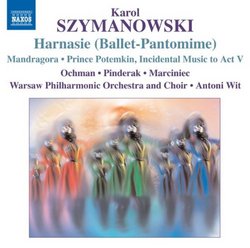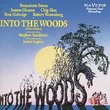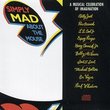| All Artists: Warsaw Philharmonic Orchestra, Warsaw Philharmonic Choir, Wit Title: Szymanowski: Harnasie (Ballet-Pantomime) Members Wishing: 0 Total Copies: 0 Label: Naxos Original Release Date: 1/1/2009 Re-Release Date: 2/24/2009 Genre: Classical Styles: Ballets & Dances, Ballets, Forms & Genres, Theatrical, Incidental & Program Music, Historical Periods, Modern, 20th, & 21st Century, Symphonies Number of Discs: 1 SwapaCD Credits: 1 UPC: 747313072378 |
Search - Warsaw Philharmonic Orchestra, Warsaw Philharmonic Choir, Wit :: Szymanowski: Harnasie (Ballet-Pantomime)
 | Warsaw Philharmonic Orchestra, Warsaw Philharmonic Choir, Wit Szymanowski: Harnasie (Ballet-Pantomime) Genre: Classical Multiple prize-winner and Grammy award nominee for several of his Naxos recordings, Antoni Wit is one of today's most highly regarded Polish conductors, an ideal interpreter of the exotic, colourfully scored music of Karol... more » |
Larger Image |
CD DetailsSynopsis
Product Description Multiple prize-winner and Grammy award nominee for several of his Naxos recordings, Antoni Wit is one of today's most highly regarded Polish conductors, an ideal interpreter of the exotic, colourfully scored music of Karol Szymanowski, described by Sir Simon Rattle as 'one of the greatest composers of this century'. The ballet-pantomime Harnasie and the incidental music for Prince Potemkin both draw on the folk-music of the people of the Tatra Mountains, while the ballet Mandragora was composed for a production of Molière's comedy Le bourgeois gentilhomme. Similarly Requested CDs
|
CD ReviewsTwo Ballets and Some Incidental Music by Szymanowski J Scott Morrison | Middlebury VT, USA | 03/19/2009 (4 out of 5 stars) "I had known of Szymanowski's ballet-pantomime 'Harnasie' for many years but until this CD came my way I'd never heard a note of it. Its composition took Szymanowski many years -- from 1923 to 1931 -- and it underwent many revisions and tweakings during that time. It had been inspired by the composer's extended visits to the Tatra region of southern Poland and the wedding there of his friends Jerzy Rytard and Helena Roj. He was fascinated by the singing and dancing at the wedding festivities by local peasants. It is no surprise, then, that there are points of reference, at least in general feeling, with Stravinsky's 'Les Noces.' The ballet's story is about the wedding of a young girl, kidnapped by local bandits called the Harnasie, to their leader, Harnas. By the time Szymanowski wrote this work his style had incorporated both impressionism and the movement in eastern Europe focused on folk music. The ballet incorporates tenor solos and choral singing among its eleven scenes -- the venerable Polish tenor Wieslaw Ochman is heard singing about the joys of the bandit life -- and makes much use of actual Tatra folk melodies and rhythms. The music is notable for its sense of unfettered celebration, tenderness and brutality. Wit and the Warsaw Philharmonic, along with soloists and chorus, give a scintillating performance.
'Mandragora', from 1920, is a pantomime composed for use in the third act of Molière's 'Le bourgeois gentilhomme' (also the inspiration for Strauss's 'Ariadne auf Naxos'). Its three scenes portray a bored king and queen being entertained by commedia dell'arte figures. Highly satirical and broadly humorous, there are strong Stravinskian gestures similar to 'Petrushka', a score that had much impressed Szymanowski. There are also some similarities to Prokofiev's 'Love for Three Oranges.' One is impressed by the composer's deft orchestration and memorable melodies. Incidental music for the fifth act of Micínski's 'Prince Potemkin' ('Kniaz Potemkin'), a play about an anti-tsarist mutiny of the Polish battleship Potemkin's crew, is from 1925. It, too, uses Tatra folk music as its basis. The music accompanies the scene of a vision experienced by Lieutenant Szmidt about, among other characters, the seven-year-old Dalai Lama. The music underscores the scene's mysterious mood, and the melodies it uses are modal, evoking the chaplains' and Dalai Lama's chants. This issue is recommended for those wishing to explore the orchestral music of the most important Polish composer of the first half of the twentieth century. Scott Morrison " |










